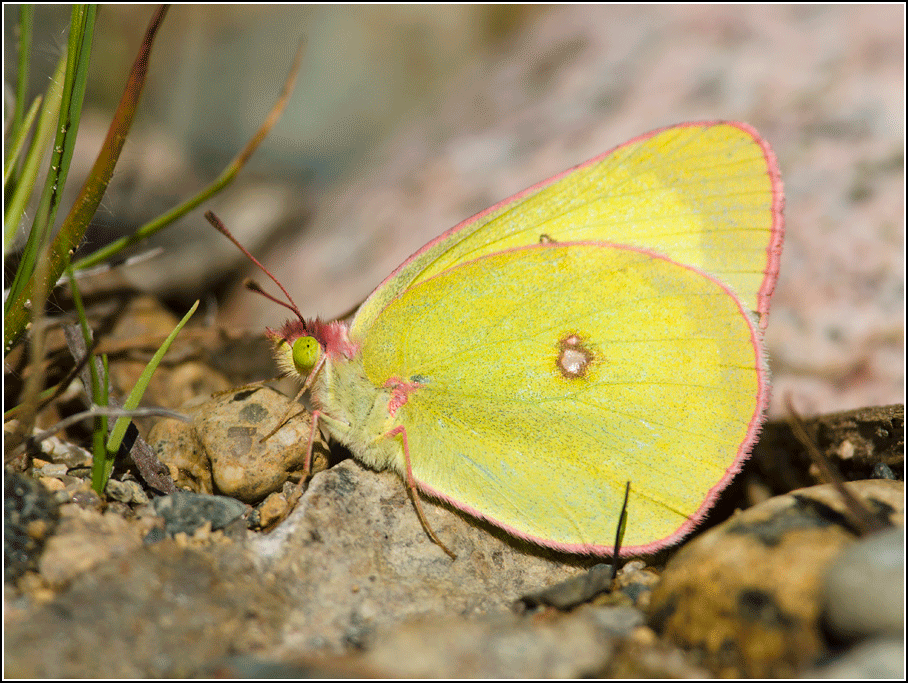These were all taken one morning near Matheson, Ontario. The habitat was cleared Jack Pine plantation with several bogs interspersed. Dominant groundcover in the wetter areas included Sheep Laurel, Labrador Tea, Leatherleaf, and Bog Rosemary. In the drier areas I recall a lot of Sweetfern, Low-sweet Blueberry, and the ubiquitous Bracken Fern. Various willow species, Green Alder, and Pin Cherry (among other shrubs) had filled in most of the open areas as it had been several years since the site was last logged.
 |
| Pin Cherry |
Habitat like this is perfect for Mourning Warblers and Chestnut-sided Warblers!
 |
| male Chestnut-sided Warbler |
Some nice areas of spruce surrounded the logged portion of the site, and as a result I saw a few species that are closer associated with this habitat type, such as Black-backed Woodpecker, White-winged Crossbill, Yellow-bellied Flycatcher, Blue-headed Vireo, and Magnolia Warbler.
 |
| male Magnolia Warbler |
Bear tracks! I ended up seeing two bears on this site, though unfortunately both took off about as quickly as possible into the woods. These northern bears are a little less tame than your typical cottage-country garbage-dump bear.
 |
| Black Bear tracks |
One of most common species of wildflower in any open area - the Ox-eye Daisy, still with some early morning dew on its petals.
 |
| Ox-eye Daisy (Bird's-foot Trefoil in background) |
Here is a recently fledged Hermit Thrush. Without a doubt the most common bird-song heard throughout this habitat type (or really, any open habitat in the boreal forest) is the White-throated Sparrow. Most point counts will have at least five or six different males singing, and some point counts will have up to 10. The second most common bird seems to be the Hermit Thrush, though they are more likely to be heard earlier in the morning. I found a few recently fledged baby Hermits during my travels.
 |
| fledgeling Hermit Thrush |
As the morning wore on the bird song slowly decreased while the solar-powered species made their presence known. I identified about 8 species of dragonflies, however there were several others whose identification will remain unknown since I don't yet own an insect net...
Butterflies were a little more straightforward and I turned up about ten species. I photographed two common species for up here - White Admiral and Pink-edged Sulphur. Pink-edged Sulphurs are a northern species that seems to prefer open areas, as long as their host-plant Blueberries (Vaccinium species) are present.
 |
| Pink-edged Sulphur |
I photographed this moth which is an underwing of some sort - any ideas?
The always abundant White Admiral during my early summer trips to the boreal forest.
 |
| White Admiral |
That's all she wrote for the 2014 breeding bird season in Ontario! I'm already looking forward to 2015.
My next few blog posts will have something a little more interesting - the long overdue Panama photos from earlier this year! I'm not sure how many posts they will cover, but I'll probably do one post for each day of the trip.


4 comments:
I had commented that it is a Drasteria before and looking at the Moth Photographers Group, I would think Drasteria adumbrata is a good bet. Perhaps someone with local experience can chime in.
Definitely not an underwing (Catocala) -- I agree that it looks like Drasteria adumbrata – Shadowy Arches Moth. The Cutworm Moths of Ontario and Quebec show it as "Synedoida adumbrata alleni" which must be an old name, but presumably the subspecific name of "alleni" still stands.
Josh, I enjoy your posts. I run a Breeding Bird Survey route from Dwight, near my cottage, every spring, and it's my favourite day of the year (58 species this year, plus three more spotted between stops). It's fascinating to see the differences and similarities in species from farther north. ~Van (U of G wildlife bio '87 and Guelph resident)
Post a Comment